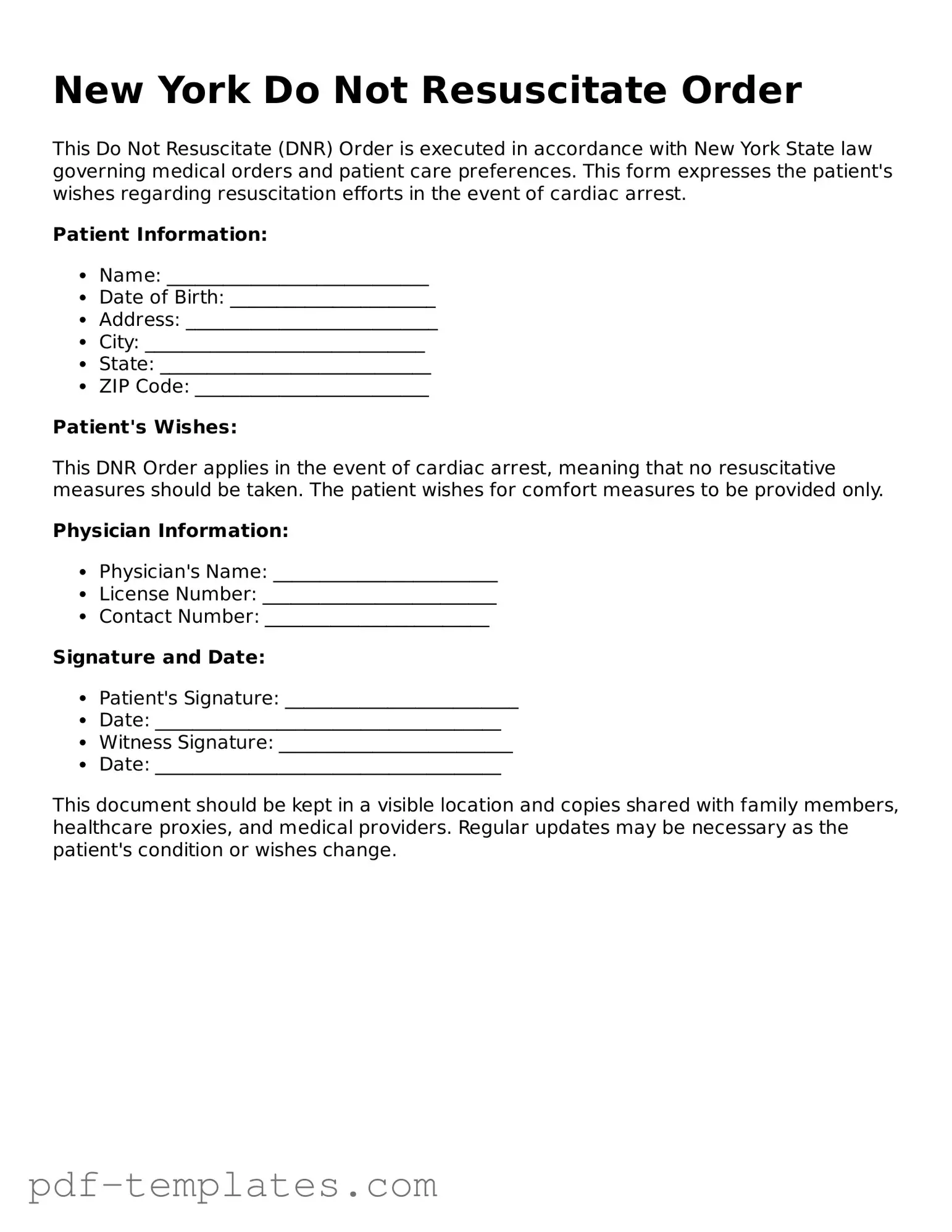The New York Do Not Resuscitate Order (DNR) form shares similarities with the Advance Directive. An Advance Directive is a broader document that allows individuals to outline their healthcare preferences in case they become unable to communicate their wishes. Like the DNR, it provides guidance to healthcare providers and family members about the patient's desires regarding medical treatment, including resuscitation efforts. Both documents aim to ensure that a person's choices regarding their end-of-life care are respected.
Another document similar to the DNR is the Physician Orders for Life-Sustaining Treatment (POLST). The POLST form translates a patient's wishes into actionable medical orders. While the DNR specifically addresses resuscitation, the POLST covers a wider range of treatment preferences, including the use of feeding tubes and other life-sustaining measures. Both forms require the involvement of a healthcare provider, ensuring that the patient's wishes are medically valid and can be followed in emergency situations.
The Living Will is also akin to the DNR. A Living Will is a legal document that expresses a person's wishes regarding medical treatment in the event they are unable to communicate. It typically covers scenarios involving terminal illness or irreversible conditions. Like the DNR, it serves to inform medical professionals and family members about the individual’s preferences, particularly concerning life-sustaining treatments.
Health Care Proxy documents bear resemblance to the DNR as well. A Health Care Proxy allows a person to designate someone else to make medical decisions on their behalf if they are unable to do so. While the DNR specifies what treatments should not be administered, the Health Care Proxy empowers the appointed individual to make decisions that align with the patient’s values and wishes, including the choice to forego resuscitation.
The Medical Power of Attorney is another document that aligns with the DNR. This legal document grants a designated individual the authority to make healthcare decisions for someone who is incapacitated. While the DNR focuses on resuscitation specifically, the Medical Power of Attorney encompasses a broader range of healthcare decisions, ensuring that the patient’s overall medical preferences are honored.
Similar to the DNR is the Comfort Care Order. This document prioritizes comfort and quality of life over aggressive medical interventions. It directs healthcare providers to focus on pain relief and symptom management rather than curative treatments. Both the Comfort Care Order and the DNR reflect a patient’s desire to avoid invasive procedures, emphasizing the importance of dignity and comfort in end-of-life care.
Understanding various medical forms is essential for making informed decisions about healthcare preferences. Just as the New York Do Not Resuscitate Order (DNR) and related documents clarify patients' wishes for treatment, ensuring clarity is paramount in legal matters as well. For instance, the All California Forms provide essential templates that help establish clear agreements, preventing misunderstandings in professional engagements similar to how advance directives articulate medical preferences.
Lastly, the Do Not Intubate (DNI) order is closely related to the DNR. The DNI specifically instructs medical personnel not to insert a breathing tube in case of respiratory failure. While the DNR addresses cardiac arrest and the use of CPR, the DNI focuses on respiratory support. Both documents are part of a patient's wishes regarding the limits of medical intervention, ensuring that their preferences are clear in critical situations.
